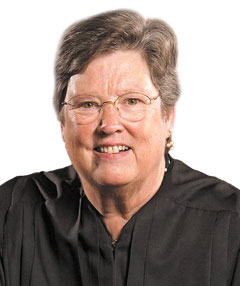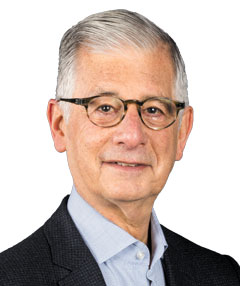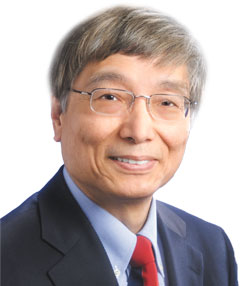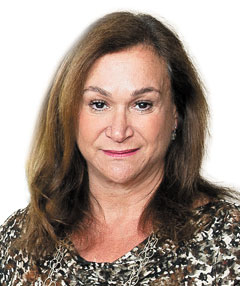Sarah Evans Barker: Courts reflect societal change
For the past 40 years, my primary engagement in and with the city of Indianapolis has been as a lawyer and judge of the federal District Court headquartered at the Birch Bayh Federal Courthouse. That perch has allowed me a remarkable opportunity to both observe and participate in the life of our city.
The ways in which the court has changed and adapted over these past four decades provides a good lens through which to view the larger patterns of change that have played out in our community. While many of the ways in which we perform our constitutional responsibilities have shifted, the underlying mission to deliver on the promise of rendering justice under law in this place has remained constant.
One thing that has not changed is the size of the court. In 1980, there were five authorized Article III judgeships appointed to oversee the federal judicial business within Indiana’s 60 southern-most counties. That number remains at five, in spite of the fact that the number of civil cases has doubled and criminal cases have quadrupled.
Besides the increase in the number of cases filed with the court, the complexity of the issues has greatly expanded. In 1980, much of the civil litigation centered on state law or diversity of citizenship claims, such as negligence, contracts and property disputes, along with a smattering of constitutional and federal questions. Today, judges wrestle with highly vexing problems of science and technology: the dark web and alternative currencies, such as Bitcoin; the exploitation of the Internet; and the growth and expansion of social, broadcast and published media.
There also has been an explosion in cases involving employment discrimination and civil rights disputes, environmental degradation and immigration regulations, the impact of enormous economic disparities within our society, the challenges to access to education, health care and corporate survival. These are very hard cases to resolve based on the controlling legal authorities.
On the criminal side, the court has moved away from a docket containing mostly car thefts, gambling, bank robbery, embezzlement and fraud prosecutions to a current prosecutive preoccupation with drug (especially opioid) cases, as well as gun possession and violence, along with immigration violations. Defendants are often very young, their resources few, their histories checkered, and their families dysfunctional.
These criminal cases often involve highly sophisticated surveillance techniques, terrorism and national security considerations, multinational cartels and far-reaching conspiracies. They often bring with them high levels of risk to and fear on the part of cooperating witnesses, co-defendants, and sometimes attorneys and court personnel.
Today, almost every lawyer is a specialist. Lawyers specializing in litigation far outnumber those focusing on trial practice. The government is represented by career prosecutors, not by the kind of young lawyers of yore, who, after landing a prosecutive position, stayed only briefly before moving on to private practice. Criminal defense counsel, too, is often highly professional attorneys these days. The increased professionalism among all lawyers is an important improvement over the generic quality of most of the bar 40 years ago.
Back then, lawyers and judges were likely to be personally acquainted with one another. It was a small, cohesive, homogeneous, collegial guild. Today, the court’s roll of active attorneys has surpassed 28,000. They are a richly diverse group, reflecting lively and beautiful variations in race, gender, national origin, religion and ethnicity. This variety reflects an exciting and welcome change in the court, as well as in the community.
In 1980, there were so few women lawyers practicing in Indiana that we literally all knew one another by name, professional specialty and reputation. The number of lawyers of color was even fewer.
After being appointed in 1984 as the first woman federal judge on our court, I remained in that “only” role for 25 more years, until 2010, when Chief Judge Jane Magnus-Stinson and Judge Tanya Walton Pratt became colleagues, Pratt bringing the added distinction of being the first African American judge on our court. Finally, our court has begun to reflect the diversity of the people we serve.
There are things some of us miss from the old days, of course, like having many of our major law firms and banks headquartered here and managed by prominent leaders in the community. We miss the vibrancy of a wide array of civic and fraternal groups, whose memberships and social contributions seem now to be on the wane. We miss the influence and muscle of labor unions and the vitality of competing newspapers. (In 1980, three full-time journalists covered the federal courthouse on a daily basis. Today, none do.)
We miss having easy walk-in access to family doctors and dentists, to hospitals and neighborhood bars and restaurants. We miss being called by name when we go to the bank. We miss having law firms concentrated downtown, which allowed us to cross paths regularly at lunchtime with friends and connect up at well-attended bar association functions.
The widespread growth of technology has changed almost everything in our society, including the courts. Today, few people have occasion even to visit the courthouse, beyond trials, hearings and conferences with judges. The court docket is entirely electronic. Communication between judges and lawyers occurs by email and Zoom calls.
Judges and their clerks rely on computers to conduct electronic research, rather than pulling down the old law books off the shelves, to crank out rulings on the motions filed electronically every hour of every day. Trials, when they occur, are facilitated and evidence managed by video evidence-display projection, and court reporters create an electronic record of the proceedings using real-time stenography.
Finally, anyone visiting a courthouse today would notice immediately an extensive security system, overseen by a cadre of security personnel. Such heightened security is itself a telling sign of the times.
To our IBJ friends, we all say thank you for the important role you have played in our city throughout this 40-year history. Happy Birthday, and many more!•
__________
Barker is a senior judge of the U.S. District Court for Indiana’s Southern District.
Please enable JavaScript to view this content.







